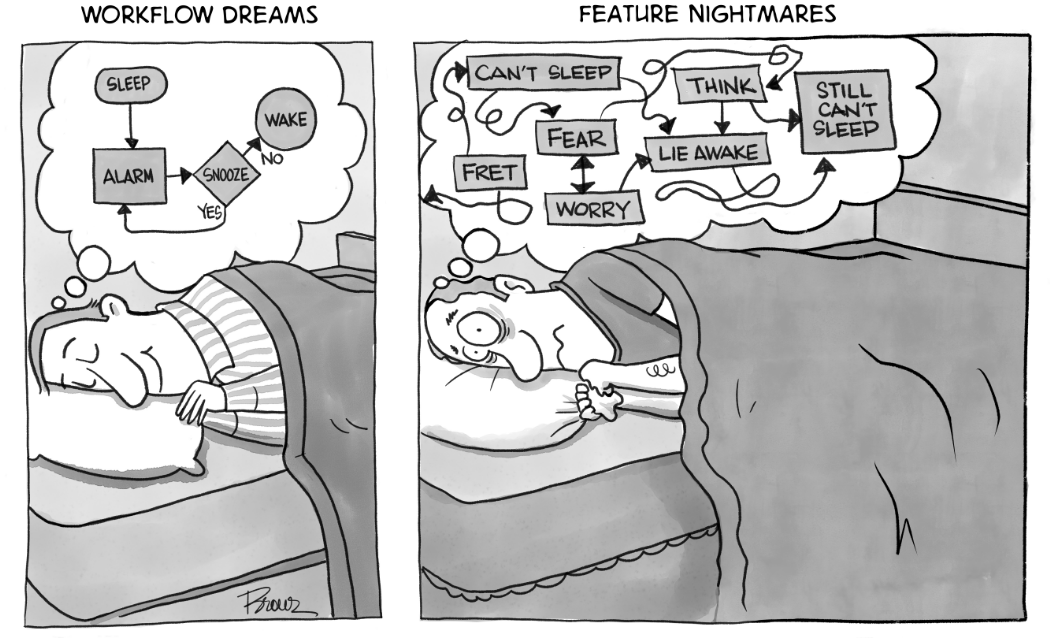With EdgeIQ, you can focus your resources on the layers of your product stack that are most strategic. You will never have to waste time building undifferentiated device management, integration, and automation software. Beyond the functional capabilities you need, we make it easy to incorporate DeviceOps throughout your product development, field service, finance, business, and customer operations. The IoT world is hard. We make it much easier.
Whether you’re making consumer electronics, physical security devices, embedded computers, field service solutions, or medical devices, as a connected product manufacturer, you’ve set out to change the world. You want to create the greatest devices there are to improve patient care, keep your customers safe, increase farm yields, or make deliveries lightning-fast and cost-efficient.
Then reality sets in. Once you have all your innovative devices deployed in the field, you realize what a slog it is to manage them. Now you must update device software, run remote diagnostics, make the devices work with ever-changing protocols, and ensure security. Let’s be realistic: no one ever launched a connected device product to "update software." That’s just table stakes.
To top it off, your customers are demanding digital services enabled by the data their devices can supply. They may want to monitor driver speeds and braking frequencies or determine what flavors of gelato are selling fastest, for example, with the aim of ensuring safety, cutting costs, or doubling revenue. They want connected products that give users actionable control and insights. In short, they want devices and the data they supply to transform their businesses.
Toe-may-toe, Toe-mah-toe
To make digital services a reality, you have to stop thinking about device management, and start thinking about DeviceOps. The two may seem like the same thing, but you’re missing a huge distinction with an important difference. Device management is all about “keeping the device lights on” — software updates, remote diagnostics, and so on. On the other hand, DeviceOps is the lifecycle management of connected devices, their data, and the orchestration of workflows throughout the entire business value chain.
In practice, DeviceOps gives you device management extraordinaire, plus the data insights and ability to provide the digital services your customers demand. DeviceOps lets you bridge physical and digital worlds with infrastructure software that will work with any device, network, or application anywhere, anytime.
Jobs, jobs, jobs to be done
So, what should you expect from a DeviceOps platform? Here are the 10 must-haves. You shouldn’t settle for anything less.
1. Complete device lifecycle management. Make sure your DeviceOps platform offers end-to-end device lifecycle management. From the time a device is pre-configured and provisioned, through maintaining its functionality until it is retired, every device must be assisted along the way to stay reliable, efficient, persistent, and secure. There’s an overwhelming multiplicity of deployment possibilities across every existing industry – from healthcare, through smart grids, to smart agriculture. Regardless of the complexity, any DeviceOps platform should be able to handle it from beginning to end of life.
2. Robust device management functionality. Be sure you can deploy, monitor, and manage any software at the edge - whether on an endpoint or a gateway. Make sure you can use your platform to update and configure operating systems, firmware, applications and even services like AI/ML from your team or a third-party service. You should also be able to effortlessly configure device heartbeats across groups of devices and automate alerts, notifications and even actions within third-party support systems or on the device itself.
3. User-defined capabilities. It’s your devices and your data. You should be able to set your devices’ operational parameters to help ensure factors such as safety and compliance. And you and your users should decide where your data goes and how it gets there, whether it’s directly from the edge or from a cloud gateway, to any infrastructure, application or database youchoose.
4. API-first. Your DeviceOps platform should take an open, API-first approach with all the functionality and data associated with your devices available through services interfaces. This requires a DeviceOps platform that supports any device, protocol, or operating system (OS); is cloud-agnostic; and supports open data and communication exchanges among all your applications, embedded analytics and reporting systems, and so on. It should allow for integration in all directions.
5. Event discovery at scale. When you’ve got a massive deployment of devices, it can be difficult to find the events and device data you need, from basic device profiles that ensure you can keep devices operating smoothly to the “needle in a haystack” information that can enable business transformation. You need to be able to make device profiles unique to specific accounts and organizations and to change monitoring and diagnostic settings over time. Make sure it is simple to create alerts and notifications, including triggering events in third-party systems.
6. Actionable data insights (a.k.a. 1,000 eyes). Once you have the data from your devices right where you want it, you need to be able to determine what’s most important to act on. Are you trying to figure out which devices are failing regularly, or which drivers are braking and speeding too much? Do you need to know if chocolate gelato is selling out every week so you can double your supply? Your DeviceOps platform should make it easy to determine.
7. Workflow support (a.k.a. 1,000 fingers). Now that you have the data to cut costs, increase revenues, or otherwise improve your business, your DeviceOps platform should automate the needed changes and relieve the people in your organization from repetitive, manually intensive tasks. You need to simplify processes related to devices, even if it just means defining a device update workflow, scheduling, executing, reporting and auditing actions across your entire fleet, or targeted at any group of devices.
8. Orchestration. Be sure you can easily configure and orchestrate even the most complex device-centric workflows between your devices, their data, your cloud services and your partner and customer applications — all with a single API or through a web application.
9. Service-enablement. When you no longer have to waste time building undifferentiated device management, integration, and automation software, you can focus on delivering data-driven services to your customers. Beyond the functional capabilities you need, you need to be able to incorporate DeviceOps throughout your product development, field service, finance, business, and customer operations. Need to help farmers irrigate in certain hours based on weather conditions, or dispatch maintenance crews automatically to service factory-floor equipment? Your DeviceOps platform should allow you to do all that and more. Remember my motto: The device is the pasta. The data is the sauce.
10. You can have it all. With DeviceOps, you no longer have to decide between investing in great physical products and delivering digital services. You really can create the best devices and deliver services that change the world. With DeviceOps, there are no limits to what you can achieve.
The tomato on top
DeviceOps is an emerging category that covers multiple functionalities, from thorough device management and workflow automation/orchestration to security and data management. All of these together are crucial to go from just knowing where your devices are to harnessing the data they create to offer breakthrough services to customers. Choosing the right DeviceOps platform is a significant stepping stone to complete business transformation — for you, and your customers.
Find out if EdgeIQ is the right DeviceOps platform for you. Don’t hesitate to schedule a demo.

